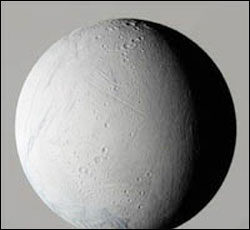This area deals with the fundamental laws and building blocks of nature and how they interact, the properties and the behavior of matter, and research into space and time and their structures.
innovations-report provides in-depth reports and articles on subjects such as astrophysics, laser technologies, nuclear, quantum, particle and solid-state physics, nanotechnologies, planetary research and findings (Mars, Venus) and developments related to the Hubble Telescope.

The first practical fountain pen was invented in 1884 by Lewis Waterman. Although pens with self-contained ink reservoirs had existed for more than a hundred years before his invention, they suffered from ink leaks and other troubles. Waterman solved these problems by inventing the capillary feed which produced even ink flow. Now fountain pen history is repeating itself in the tiny world of nanoscale writing.
Researchers at Northwestern University have demonstrated writing at the s

If you wanted a random number, historically you could do worse than to pick a sequence from the string of digits in pi. But Purdue University scientists now say other sources might be better.
Physicists including Purdue’s Ephraim Fischbach have completed a study comparing the “randomness” in pi to that produced by 30 software random number generators and one chaos-generating physical machine. After conducting several tests, they have found that while sequences of digits from pi are

Debris could be dust cloud around the moon
An instrument designed and built at the University of Chicago for the Cassini space probe has discovered dust particles around Enceladus, an ice-covered moon of Saturn that has the distinction of being the most reflective object in the solar system. The particles could indicate the existence of a dust cloud around Enceladus, or they may have originated from Saturn’s largest ring, the E-ring.
“We are operating on the plane o

Students play important role in Nobel-caliber research
Tucked away in a small, cluttered laboratory on Patuxent River Naval Air Station, two physicists spend their days trapping atoms – millions and millions of microscopic atoms. Dr. Frank Narducci, a physicist at Patuxent River Naval Air Station (NAVAIR 4.5.6.) and adjunct professor of physics at St. Mary’s College of Maryland, and Dr. Charles Adler, a physics professor at St. Mary’s College of Maryland, are engaged in groundbreak

Thirty years after scientists at the University of Missouri-Rolla and Grambling College discovered “strange” Xenon in meteorites, scientists from Japan and France are reporting the discovery of other strange elements left over from the birth of the solar system.
A 1976 study published in the journal Nature showed that strange Xenon, which is made in supernova explosions, is present within the composition of the Sun. Those findings by the UMR and Grambling team were largely dismiss

The ESO Very Large Telescope (VLT) has just passed an impressive milestone with the publication of the 1,000th peer-reviewed scientific article based on data from the world’s largest and most advanced optical and near-infrared telescope.
“This remarkable landmark, reached in only six years of operations is another clear demonstration of the unique capabilities of this telescope, a true flagship in European research that is continuously opening new horizons in astrophysics”, s